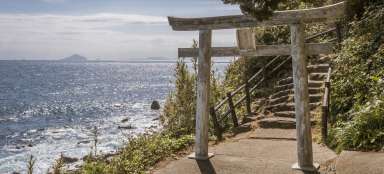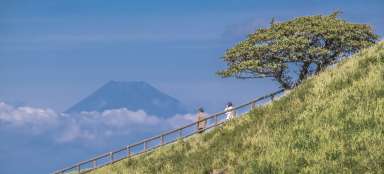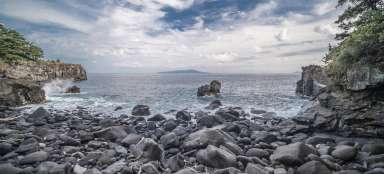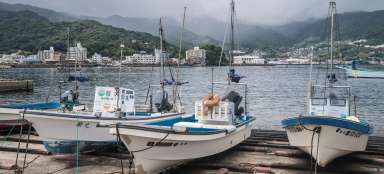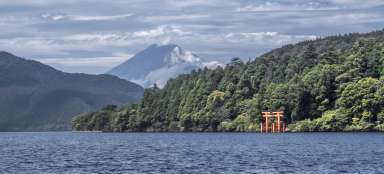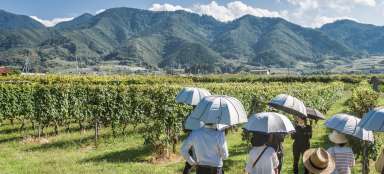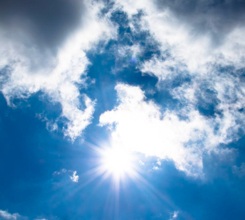A coastal city in the southwest of the Izu Peninsula

Shimoda is a popular place for tourists who want to do sea sports, visit beaches and hot springs. It has historical significance as the landing site of several of Commodore Perry's „black ships“ in 1854, an event that led to the end of Japan's era of isolation and the beginning of diplomatic relations between the US and Japan.
Mt. Nesugata
Shimoda can be reached by car along the coastal road, or by taking the local train to the Izukyu Railway. We get off at Izukyu-Shimoda Station, the terminus, from where it is about 200 meters to the cable car station to the top of Mt. Nesugata (Reclining Lady).

On the top
We climb from the top station of the cable car through a natural park with a variety of seasonal flowers. There are wonderful panoramic views of the bay, the city and the ocean as far as the Izu Seven Islands.

Aizen-Do
We climb through the flower gardens to the colorfully painted Buddhist rotunda. Called Aizen-Do, this pavilion is, according to local belief, a place for those looking for love.
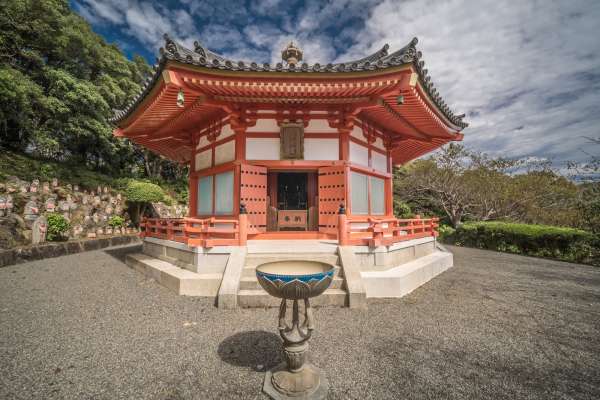
Shimoda
The network of trails at the top takes us to various vantage points from which there is a nice view of the city and the surrounding mountains.
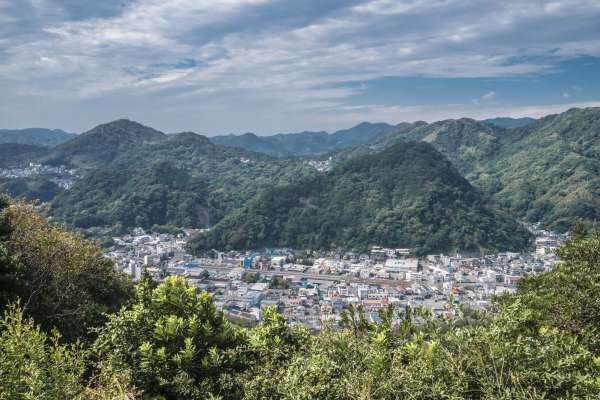
Shimoda
Even the trip in the cable car cabin is accompanied by wonderful aerial views of the city along the Inouzawa River. Shimoda is a good base for trips to the surrounding mountains and the entire south of the Izu Peninsula.
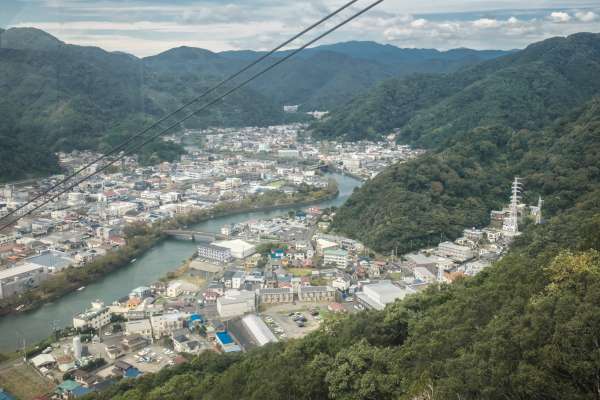
Port
We continue through the city along the bay in a southerly direction along Okawabata Street, which leads to Perry Road and the „Perry's Landing“ monument. We are accompanied by the peaceful scenery of anchored ships.
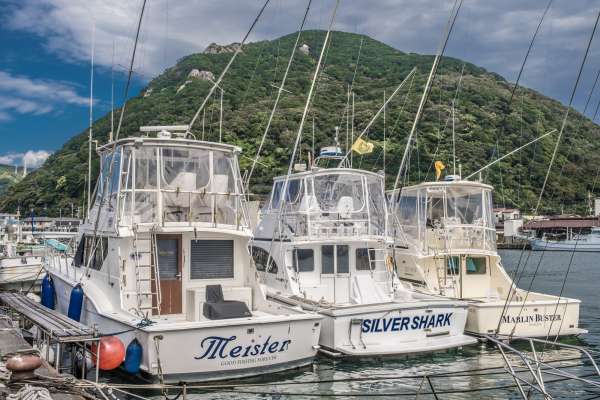
City
When traveling, it is always interesting to see how and where the locals live. In Japan, in many cases, living space is significantly limited. According to local information, there are many residents of Shimoda who live and work in Tokyo and Yokohama during the week and return home only on the weekend.
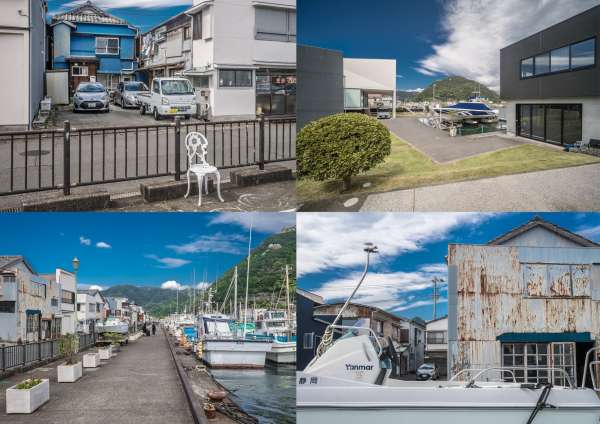
"Perry Road" area
Matthew Calbraith Perry (1794–1858) was a commodore in the United States Navy who commanded ships in several wars, including the British–American War of 1812 and the Mexican–American War (1846–1848). As commander of the United States Naval Squadron in the Pacific in 1853–1854, he played a significant role in ending the isolation of Japan when his fleet anchored off the Japanese capital, forcing the shogunate to open its ports. With the subsequent conclusion of a trade treaty with the USA in 1854, Japan's isolation of more than two centuries was broken.
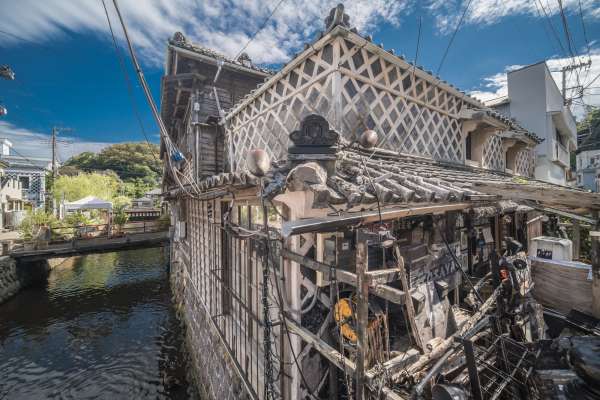
Perry Road
We walk along Perry Road, the road that Commodore Matthew C. Perry marched to Ryosenji Temple. It is located approximately 500 meters from there. The walls of Namaka and the houses of Izu surround a stone-paved road that runs along both sides of the Hiraname River.

Ryōsen-ji
We continue to the Buddhist temple of the Nichiren sect. On July 29, 1858, the Treaty of Friendship and Trade between the Tokugawa shogunate of Japan and the United States of America was signed here.
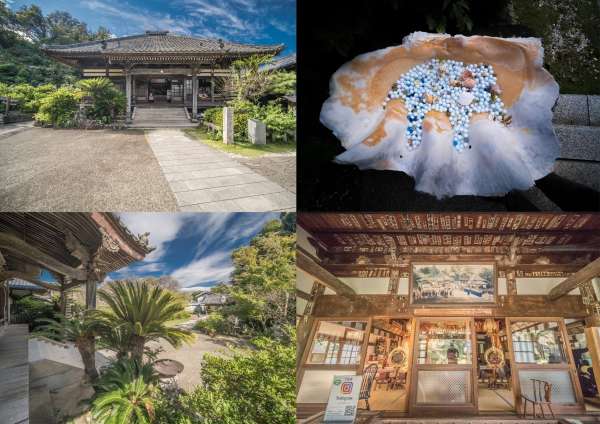
Mai Mai Street
We leave the historical sites of Shimoda and return along Mai Mai Street back to the train station, from where not only regional connections depart, but also direct trains to Tokyo.





